Samia Gamal is a Actor Egyptienne born on 27 may 1924 at Beni Suef (Egypte)

Samia Gamal (Arabic: سامية جمال, born as Zaynab Ibrahim Mahfuz, 5 March 1924 – 1 December 1994) was an Egyptian belly dancer and film actress.
Born in the small Egyptian town of Wana in 1924, Samia's family moved just months later to Cairo and settled near the Khan El-Khalili bazaar. It was many years later that Samia Gamal met Badia Masabni, the founder of modern Oriental dance. Badia offered Samia an invitation to join her dance company, which Samia accepted. Badia Masabni gave her the stage name Samia Gamal, and she began her dance career.
At first, she studied under Badia and Badia's star dancer at the time, Tahiya Karioka. However she soon became a respected soloist and brought forth her own style. Samia Gamal incorporated techniques from ballet and Latin dance into her solo performances. She was also the first to perform with high-heeled shoes on stage. She starred in dozens of Egyptian films next to the famous Farid Al Attrach. They could be thought of as the Fred Astaire and Ginger Rogers of the Middle East. They not only played each other's love interest on the silver screen but also in real life. However, their love was not meant to be. Because of Farid's social position, he refused to marry Samia. Farid believed that marriage kills artist talent, he never married. Some claim that Farid as a Druze prince, told her it would bring too much shame to his family for him to marry a belly dancer; but the claim is baseless. Farid helped placing Samia on the National Stage by risking all he owned, and managed to borrow to produce a film (Habib al omr) co-starring with her in 1947.
In 1949, Egypt's King Farouk proclaimed Samia Gamal "The National Dancer of Egypt", which brought US attention to the dancer.
In 1950, Samia came to the US and was photographed by Gjon Mili. She also performed in the Latin Quarter, New York's trendy nightclub. She later married the so-called "Texas millionaire" Shepherd King III, whom, it was later reported only had about $50,000. However, their marriage did not last long.
In 1958, Samia Gamal married Roshdy Abaza, one of the most famous Egyptian actors with whom Samia starred in a number of films. Samia Gamal stopped dancing in 1972 when she was nearly in her 50s but began again after given advice by Samir Sabri. She then danced until the early 1980s.
Samia Gamal died on 1 December 1994, at 70 years of age in Cairo. Samia's charismatic performances in Egyptian and international films gave Oriental Dance recognition and admiration in Egypt and worldwide.
Elle travaille sous la direction de Badia Masabni alors que Tahia Carioca tient le premier rôle dans la troupe : elle évolue parmi les danseuses chargés sur scène de mettre en valeur la danseuse vedette. Puis elle parvient à devenir danseuse solo et introduit dans son style des éléments du ballet classique et la danse latino-américaine. Elle rend plus expressive la danse orientale notamment grâce à un mode d'improvisation plus libre. Elle se met à utiliser le voile pour danser, son professeur de danse classique l'ayant encouragé à l’employer pour améliorer le maintien de ses bras. Samiaa Gamal est aussi la première danseuse orientale à danser sur scène avec des chaussures à talons hauts. Elle joue dans de nombreux films, d'abord comme simple figurante, dans la première partie des années 1940. Remarquée par sa présence cinématographique, elle se voit confier ensuite des rôles plus importants. Elle obtient ainsi en 1946 le rôle principal dans Ahmar shafayef (Rouge à lèvres) de Wali Eddine Sameh. Elle y interprète le rôle d'une domestique qui éveille le désir du maître de maison, mais l'homme, séduit par sa délicatessse, ses yeux malicieux, son sourire, est par contre désarçonné par son innocence. Jusque la fin du film, le spectateur se demande si elle va lui céder ou pas.
Samia Gamal fait la rencontre de Farid El Atrache et ils tombent amoureux l’un de l’autre. Farid El Atrache et Samia Gamal jouent ensemble en 1949 dans Ahebbak inta (C'est toi que j'aime) d'Ahmed Badrakhan. Dans le film Madame la diablesse (Afrita anem) d'Henry Barakat, Samia joue un double rôle, celui de Semsema, la danseuse, et celui de la femme djinn Kahramana, sortant d'une lampe, comme un génie, pour charmer Farid El Atrache. De fait, il lui est souvent demander d'utiliser ses talents de danseuse dans ses rôles au cinéma.
Farid El Atrache et Samia Gamal deviennent un tandem bien connu des films égyptiens, en particulier dans les comédies musicales. Mais leur liaison ne dure pas. Après leur séparation, elle joue dans des films internationaux tel que La Vallée des Rois en 1954. Elle se fait connaître des spectateurs français notamment par son interprétation du rôle de Morgiane dans Ali Baba et les Quarante voleurs, le film de Jacques Becker, sorti cette même année 1954, où ses déhanchements rendent fou d'amour Ali Baba, interprété par Fernandel.
Samia Gamal épouse en 1952 Sheppard King, un riche homme d'affaires texan, ayant fait fortune dans le pétrole. Celui-ci se convertit à l’islam, ce qui renforce la popularité de la danseuse égyptienne. Mais leur mariage ne dure pas longtemps, non plus. En 1958, elle se marie avec Rushdy Abaza , un acteur égyptien, avec qui elle tient ensuite le premier rôle dans plusieurs films.
Elle meurt le 1er décembre, au Caire, des suites d'un cancer de l'intestin.
Source : Wikidata
Samia Gamal

- Infos
- Photos
- Best films
- Family
- Characters
- Awards
Birth name Zeinab Ali Khalil Ibrahim Mahfouz
Nationality Egypte
Birth 27 may 1924 at Beni Suef (Egypte)
Death 1 december 1994 (at 70 years) at Cairo (Egypte)
Nationality Egypte
Birth 27 may 1924 at Beni Suef (Egypte)
Death 1 december 1994 (at 70 years) at Cairo (Egypte)
Born in the small Egyptian town of Wana in 1924, Samia's family moved just months later to Cairo and settled near the Khan El-Khalili bazaar. It was many years later that Samia Gamal met Badia Masabni, the founder of modern Oriental dance. Badia offered Samia an invitation to join her dance company, which Samia accepted. Badia Masabni gave her the stage name Samia Gamal, and she began her dance career.
At first, she studied under Badia and Badia's star dancer at the time, Tahiya Karioka. However she soon became a respected soloist and brought forth her own style. Samia Gamal incorporated techniques from ballet and Latin dance into her solo performances. She was also the first to perform with high-heeled shoes on stage. She starred in dozens of Egyptian films next to the famous Farid Al Attrach. They could be thought of as the Fred Astaire and Ginger Rogers of the Middle East. They not only played each other's love interest on the silver screen but also in real life. However, their love was not meant to be. Because of Farid's social position, he refused to marry Samia. Farid believed that marriage kills artist talent, he never married. Some claim that Farid as a Druze prince, told her it would bring too much shame to his family for him to marry a belly dancer; but the claim is baseless. Farid helped placing Samia on the National Stage by risking all he owned, and managed to borrow to produce a film (Habib al omr) co-starring with her in 1947.
In 1949, Egypt's King Farouk proclaimed Samia Gamal "The National Dancer of Egypt", which brought US attention to the dancer.
In 1950, Samia came to the US and was photographed by Gjon Mili. She also performed in the Latin Quarter, New York's trendy nightclub. She later married the so-called "Texas millionaire" Shepherd King III, whom, it was later reported only had about $50,000. However, their marriage did not last long.
In 1958, Samia Gamal married Roshdy Abaza, one of the most famous Egyptian actors with whom Samia starred in a number of films. Samia Gamal stopped dancing in 1972 when she was nearly in her 50s but began again after given advice by Samir Sabri. She then danced until the early 1980s.
Samia Gamal died on 1 December 1994, at 70 years of age in Cairo. Samia's charismatic performances in Egyptian and international films gave Oriental Dance recognition and admiration in Egypt and worldwide.
Biography
Elle est née en 1924. Peu après sa naissance, sa famille part pour Le Caire et s’installe près du bazar Khân al-Khalili. Elle survit par des travaux de couture, quand elle rencontre la fondatrice syro-libanaise de la danse orientale moderne, Badia Masabni. Celle-ci l'accepte au sein de sa compagnie de danse et lui donne son nom de scène : Samiaa Gamal.Elle travaille sous la direction de Badia Masabni alors que Tahia Carioca tient le premier rôle dans la troupe : elle évolue parmi les danseuses chargés sur scène de mettre en valeur la danseuse vedette. Puis elle parvient à devenir danseuse solo et introduit dans son style des éléments du ballet classique et la danse latino-américaine. Elle rend plus expressive la danse orientale notamment grâce à un mode d'improvisation plus libre. Elle se met à utiliser le voile pour danser, son professeur de danse classique l'ayant encouragé à l’employer pour améliorer le maintien de ses bras. Samiaa Gamal est aussi la première danseuse orientale à danser sur scène avec des chaussures à talons hauts. Elle joue dans de nombreux films, d'abord comme simple figurante, dans la première partie des années 1940. Remarquée par sa présence cinématographique, elle se voit confier ensuite des rôles plus importants. Elle obtient ainsi en 1946 le rôle principal dans Ahmar shafayef (Rouge à lèvres) de Wali Eddine Sameh. Elle y interprète le rôle d'une domestique qui éveille le désir du maître de maison, mais l'homme, séduit par sa délicatessse, ses yeux malicieux, son sourire, est par contre désarçonné par son innocence. Jusque la fin du film, le spectateur se demande si elle va lui céder ou pas.
Samia Gamal fait la rencontre de Farid El Atrache et ils tombent amoureux l’un de l’autre. Farid El Atrache et Samia Gamal jouent ensemble en 1949 dans Ahebbak inta (C'est toi que j'aime) d'Ahmed Badrakhan. Dans le film Madame la diablesse (Afrita anem) d'Henry Barakat, Samia joue un double rôle, celui de Semsema, la danseuse, et celui de la femme djinn Kahramana, sortant d'une lampe, comme un génie, pour charmer Farid El Atrache. De fait, il lui est souvent demander d'utiliser ses talents de danseuse dans ses rôles au cinéma.
Farid El Atrache et Samia Gamal deviennent un tandem bien connu des films égyptiens, en particulier dans les comédies musicales. Mais leur liaison ne dure pas. Après leur séparation, elle joue dans des films internationaux tel que La Vallée des Rois en 1954. Elle se fait connaître des spectateurs français notamment par son interprétation du rôle de Morgiane dans Ali Baba et les Quarante voleurs, le film de Jacques Becker, sorti cette même année 1954, où ses déhanchements rendent fou d'amour Ali Baba, interprété par Fernandel.
Samia Gamal épouse en 1952 Sheppard King, un riche homme d'affaires texan, ayant fait fortune dans le pétrole. Celui-ci se convertit à l’islam, ce qui renforce la popularité de la danseuse égyptienne. Mais leur mariage ne dure pas longtemps, non plus. En 1958, elle se marie avec Rushdy Abaza , un acteur égyptien, avec qui elle tient ensuite le premier rôle dans plusieurs films.
Elle meurt le 1er décembre, au Caire, des suites d'un cancer de l'intestin.
Best films
Usually with
Filmography of Samia Gamal (7 films)
Actress
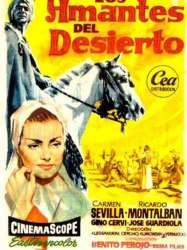
Desert Warrior (1957)
, 1h27Directed by Goffredo Alessandrini, Fernando Cerchio, León Klimovsky, Gianni Vernuccio
Genres Adventure
Actors Carmen Sevilla, Ricardo Montalbán, Gino Cervi, José Guardiola, Franca Bettoja, Mariangela Giordano
Rating52%





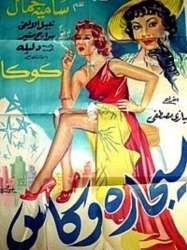
A Glass and a Cigarette (1955)
, 1h52Genres Drama, Musical
Themes Films about music and musicians, Musical films
Actors Samia Gamal, Dalida, Seraj Munir
Roles Dancer / Hoda Gamal
Rating61%





Hoda (Gamal) is a very famous entertainer in her thirties. She marries Mamdouh Samy (Nabil Al alfi), a young surgeon and leaves her colourful life behind. Hoda helps Mamdouh found a hospital but their marriage is jeopardised by Italian head nurse Iolanda's (Dalila) attraction to Mamdouh. Hoda contemplates that her husband and Iolanda are running an affair and seeks indulgence in drinking and smoking.

The Beast (1954)
, 1h55Directed by Salah Abou Seif, Salah Abou-Sayf
Genres Drama, Thriller, Action, Crime
Actors Mahmoud el-Meliguy, Anwar Wagdi, Samia Gamal, Abbas Fares, Samiha Ayoub
Roles الراقصة نعسانة
Rating62%





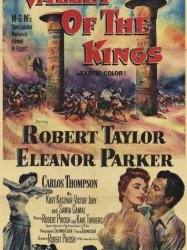
Valley of the Kings (1954)
, 1h26Directed by Robert Pirosh
Origin USA
Genres Drama, Adventure
Themes Films set in Africa
Actors Robert Taylor, Eleanor Parker, Carlos Thompson, Kurt Kasznar, Victor Jory, Leon Askin
Roles Dancer
Rating59%





En 1900 Ann Mercedes (Eleanor Parker) se rend près du Caire avec son mari Philip (Carlos Thompson) et Mark Brandon (Robert Taylor). Elle s’intéresse à la tombe du pharaon Rahotep. Après de multiples péripéties, elle cherche à prouver le lien avec le tombeau de Joseph.
 , 1h29
, 1h29Directed by Jacques Becker
Origin France
Genres Comedy, Adventure
Themes Films about animals, Films about birds
Actors Fernandel, Dieter Borsche, Samia Gamal, Henri Vilbert, Édouard Delmont, Julien Maffre
Roles Morgiane
Rating60%





« Il était une fois, dans une petite ville d’Orient, un brave homme qui s'appelait Ali Baba ». C'est un brave homme, débrouillard et généreux, ami de tous les pauvres. Il est le serviteur de confiance d'un riche bourgeois, Cassim, dont il gère les affaires, la maison et le harem. Aujourd'hui, il a acheté la belle Morgiane, vendue par son propre père. Un amour protecteur naît chez Ali : un bon somnifère empêche Cassim de la posséder et puis comment faire disparaître chez cette nouvelle recluse la mélancolie. Le perroquet vert qu'on lui avait proposé au marché ferait un bon compagnon.

Afrita Hanem: The Genie Lady (1949)
, 1h59Directed by Henry Barakat
Origin Egypte
Genres Comedy, Fantasy, Musical
Themes Films about music and musicians, Musical films
Actors Samia Gamal, Farid al-Atrash, Ismail Yasin, Zeinat Sedki, Abdel Salam Al Nabulsy, Stephan Rosti
Roles Kahramana / Semsema
Rating62%





Au Caire, Asfour (Farid El Atrache) est chanteur dans un théâtre. Il est amoureux de sa partenaire la danseuse Aliya, elle-même fille du directeur du théâtre et sur le point d'épouser l'homme d'affaires Mimi Bey qui leur apporte une dot importante. À cause d'un quiproquo, Asfour se croit aimé d'Aliya et entreprend de demander sa main à son père. Ce dernier prend la demande en considération, mais à la condition qu'Asfour offre une dot plus élevée. Comme ce dernier est sans le sou, la demande échoue. Alors qu'Asfour désespéré se lamente dans un jardin, il fait la rencontre d'un vieil homme à l'air bienveillant, personnage mystérieux qui lui apparait parfois brièvement. L'apparition lui donne rendez-vous dans une grotte le soir même. Accompagné de son alter ego Bou'ou, personnage à la fois énergique et gaffeur, Asfour va au rendez-vous où l'homme lui remet un objet qui pourra lui donner le bonheur à la condition qu'il en fasse bon usage : c'est une lampe magique dont sort une séduisante ifrit, Kahramana (Samia Gamal). Celle-ci, invisible pour tout autre que lui, le confond avec son amour, le démon Astaroth, dont Asfour a joué le rôle.
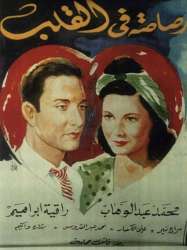
A Bullet in the Heart (1944)
Genres Drama, Comedy, Musical, Romance
Actors Faten Hamama, Seraj Munir, Bishara Wakim بشارة واكيم, Samia Gamal, Zeinat Sedki, Zeinab Sedky
Roles صديقة طماطم
Rating68%





Mohsen is a ladies' man. He has a close friend who is a polite doctor. Mohsen meets a lady, Fifi, and falls in love with her. He later discovers that she is engaged to his friend, the doctor. Although she wants to be Mohsen's lady, not the doctor's, Mohsen abandons her—he refuses her love and remains loyal to his friend.
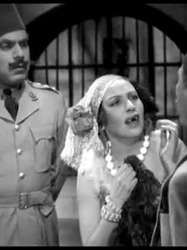
Les Miserables (1943)
Genres Drama
Actors Amina Rizk, Abbas Fares, Seraj Munir, Bishara Wakim بشارة واكيم, Zeinat Sedki, Samia Gamal
Roles المغنية فى حفلة الطفولة المشردة
Rating55%





 Connection
Connection

